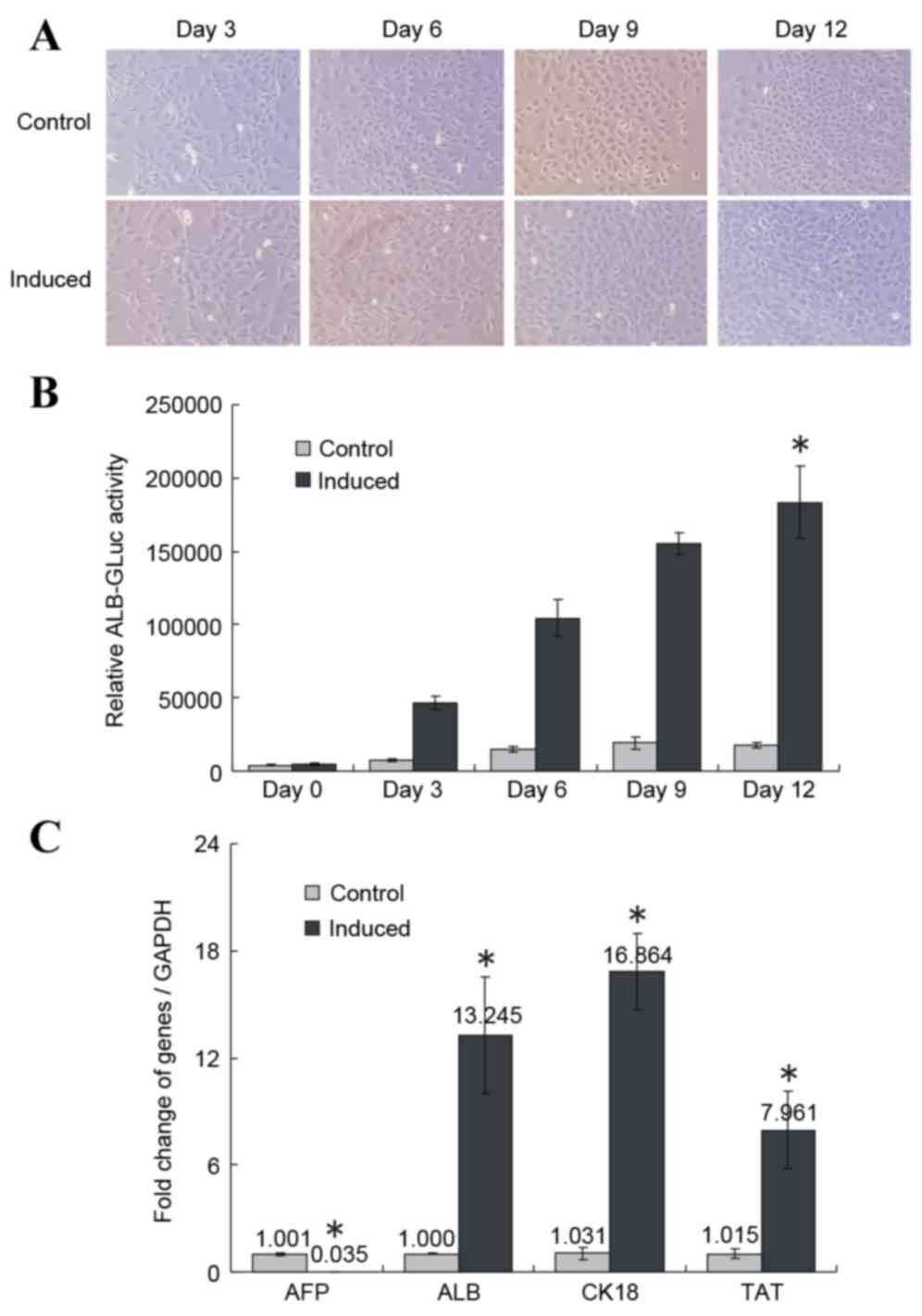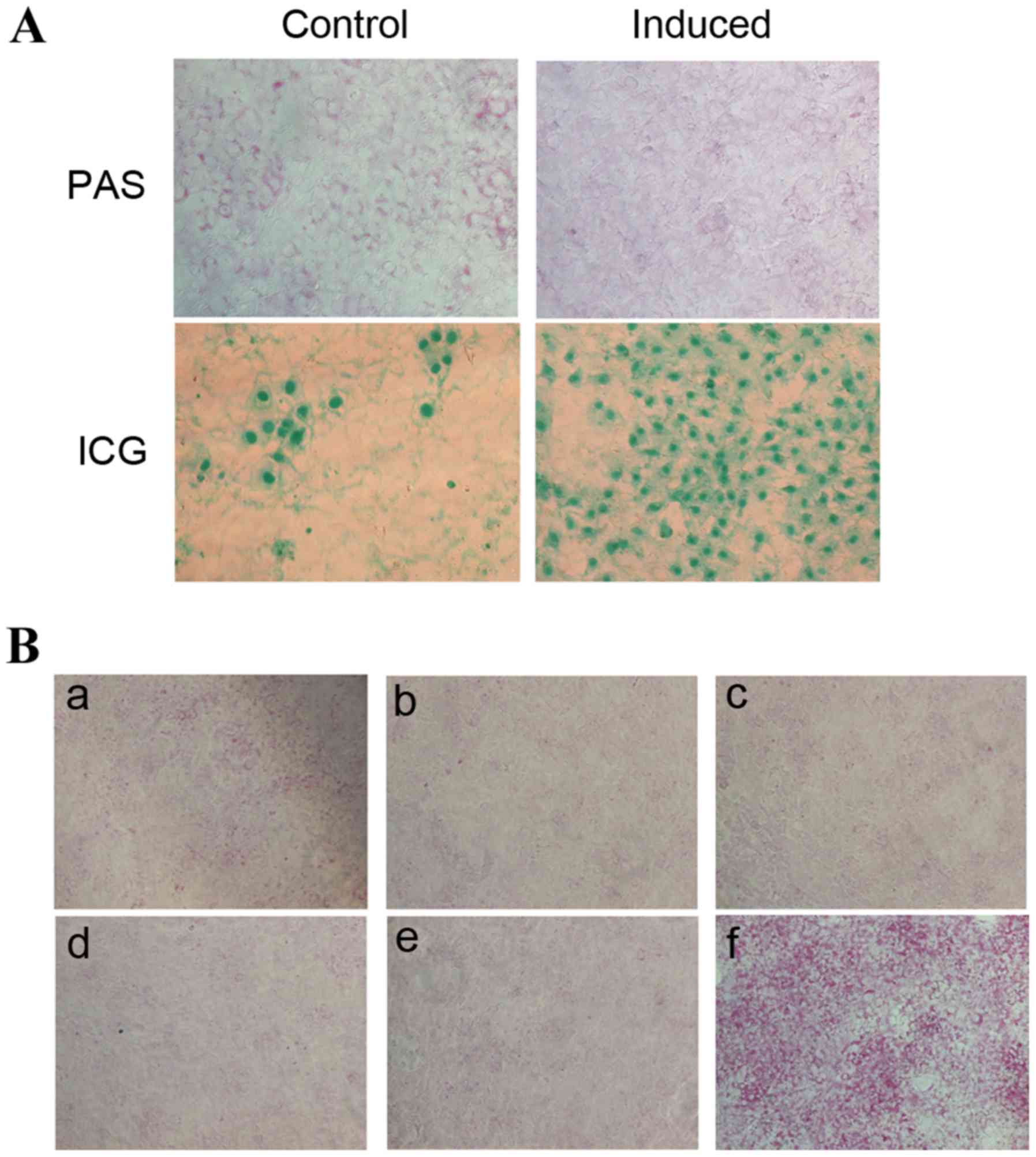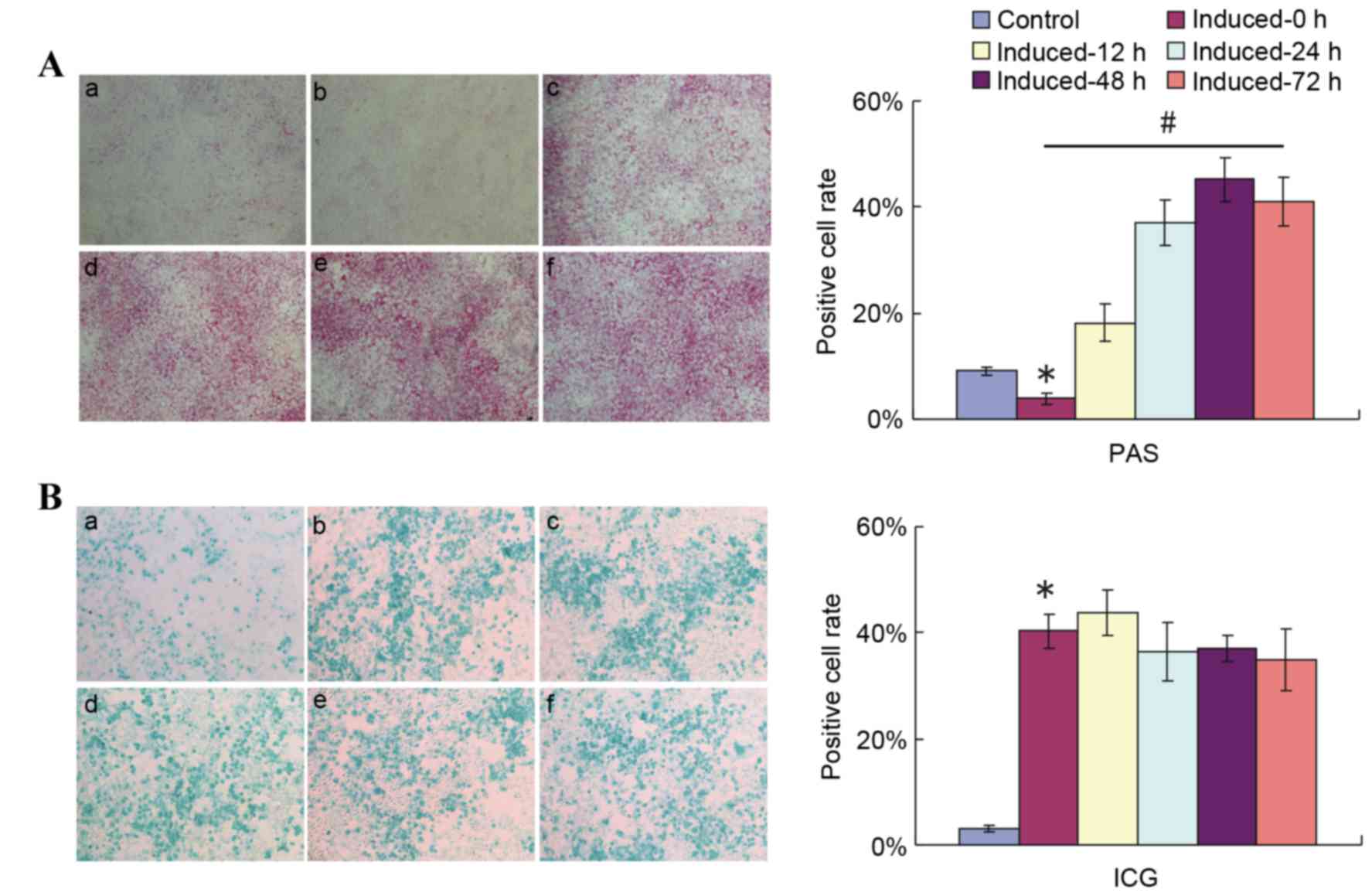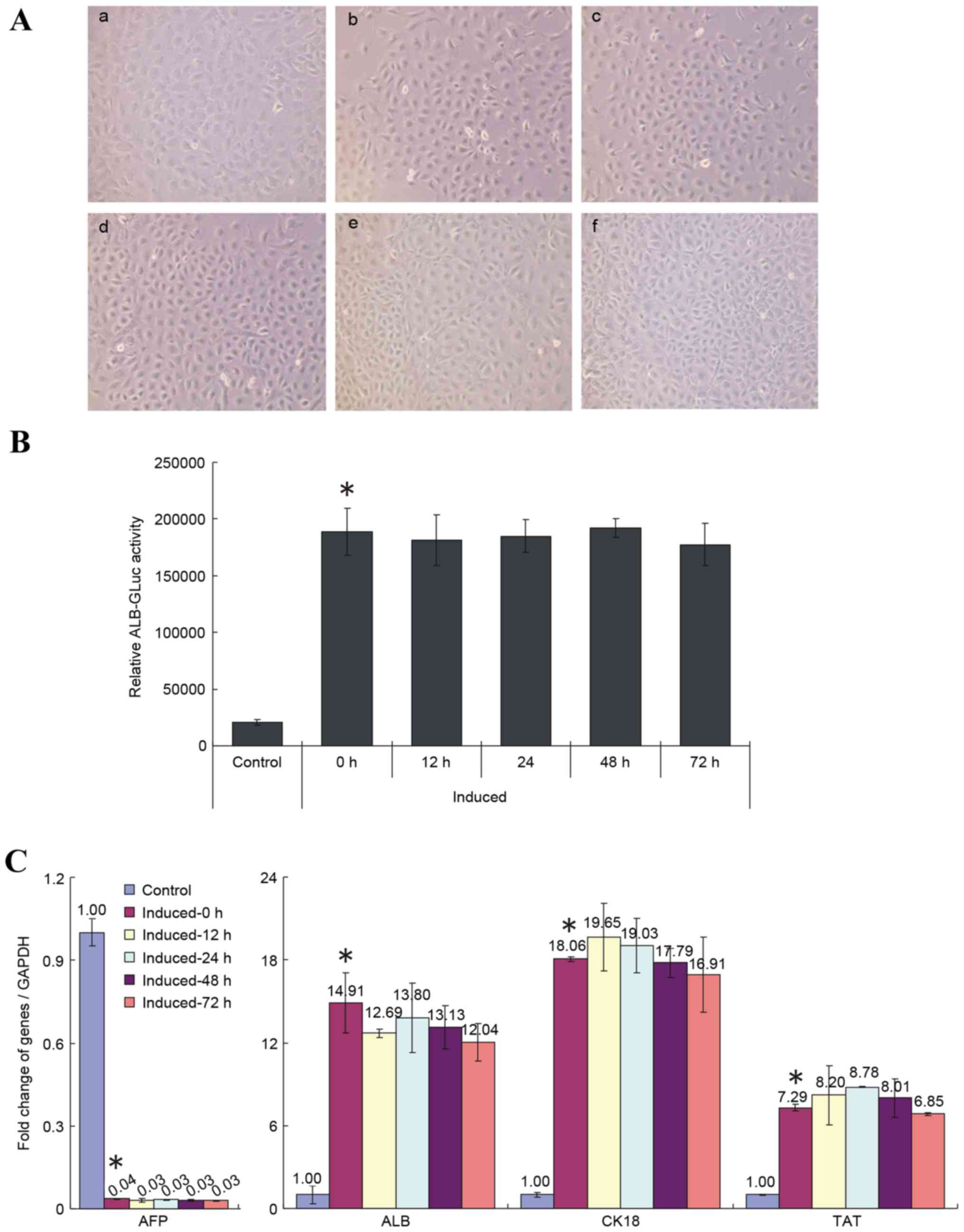|
1
|
Kadyk LC, Collins LR, Littman NJ and
Millan MT: Proceedings: Moving toward cell-based therapies for
liver disease. Stem Cells Transl Med. 4:207–210. 2015. View Article : Google Scholar : PubMed/NCBI
|
|
2
|
Huebert RC and Rakela J: Cellular therapy
for liver disease. Mayo Clin Proc. 89:pp. 414–424. 2014; View Article : Google Scholar : PubMed/NCBI
|
|
3
|
Dalgetty DM, Medine CN, Iredale JP and Hay
DC: Progress and future challenges in stem cell-derived liver
technologies. Am J Physiol Gastrointest Liver Physiol.
297:G241–G248. 2009. View Article : Google Scholar : PubMed/NCBI
|
|
4
|
Haridass D, Narain N and Ott M: Hepatocyte
transplantation: Waiting for stem cells. Curr Opin Organ
Transplant. 13:627–632. 2008. View Article : Google Scholar : PubMed/NCBI
|
|
5
|
Ichinohe N, Kon J, Sasaki K, Nakamura Y,
Ooe H, Tanimizu N and Mitaka T: Growth ability and repopulation
efficiency of transplanted hepatic stem cells, progenitor cells,
and maturehepatocytes in retrorsine-treated rat livers. Cell
Transplant. 21:11–22. 2012. View Article : Google Scholar : PubMed/NCBI
|
|
6
|
Schwartz RE, Fleming HE, Khetani SR and
Bhatia SN: Pluripotent stem cell-derived hepatocyte-like cells.
Biotechnol Adv. 32:504–513. 2014. View Article : Google Scholar : PubMed/NCBI
|
|
7
|
Pournasr B, Asghari-Vostikolaee MH and
Baharvand H: Transcription factor-mediated reprograming of
fibroblasts to hepatocyte-like cells. Eur J Cell Biol. 94:603–610.
2015. View Article : Google Scholar : PubMed/NCBI
|
|
8
|
Mu N, Liu HB, Meng QH, Du DW, Jiang Y and
Hu HZ: The differentiation of human multipotent adult progenitor
cells into hepatocyte-like cells inducedby coculture with human
hepatocyte line L02. Ann Surg Treat Res. 88:1–7. 2015. View Article : Google Scholar : PubMed/NCBI
|
|
9
|
Herrero A, Prigent J, Lombard C, Rosseels
V, Daujat-Chavanieu M, Breckpot K, Najimi M, Deblandre G and Sokal
EM: Adult-derived human liver stem/progenitor cells infused 3 days
postsurgery improve liver regeneration in a mouse model of extended
hepatectomy. Cell Transplant. 26:351–354. 2017. View Article : Google Scholar : PubMed/NCBI
|
|
10
|
He Y, Zhang WY, Gong M, Huang JY, Tang N,
Feng T, Wei GH, He TC and Bi Y: Low serum concentration facilitates
the differentiation of hepatic progenitor cells. Saudi Med J.
32:128–134. 2011.PubMed/NCBI
|
|
11
|
Bi Y, He Y, Huang JY, Xu L, Tang N, He TC
and Feng T: Induced maturation of hepatic progenitor cells in
vitro. Braz J Med Biol Res. 46:559–566. 2013. View Article : Google Scholar : PubMed/NCBI
|
|
12
|
Cho YA, Noh K, Jue SS, Lee SY and Kim EC:
Melatonin promotes hepatic differentiation of human dental pulp
stem cells: Clinical implications for the prevention of liver
fibrosis. J Pineal Res. 58:127–135. 2015. View Article : Google Scholar : PubMed/NCBI
|
|
13
|
Pal R, Mamidi MK, Das AK and Bhonde R:
Diverse effects of dimethyl sulfoxide (DMSO) on the differentiation
potential of human embryonic stem cells. Arch Toxicol. 86:651–661.
2012. View Article : Google Scholar : PubMed/NCBI
|
|
14
|
Bi Y, He Y, Huang J, Su Y, Zhu GH, Wang Y,
Qiao M, Zhang BQ, Zhang H, Wang Z..et al: Functional
characteristics of reversibly immortalized hepatic progenitor cells
derived from mouse embryonic liver. Cell Physiol Biochem.
34:1318–1338. 2014. View Article : Google Scholar : PubMed/NCBI
|
|
15
|
Bi Y, Huang J, He Y, Zhu GH, Su Y, He BC,
Luo J, Wang Y, Kang Q, Luo Q, et al: Wnt antagonist SFRP3 inhibits
the differentiation of mouse hepatic progenitor cells. J Cell
Biochem. 108:295–303. 2009. View Article : Google Scholar : PubMed/NCBI
|
|
16
|
Koressaar T and Remm M: Enhancements and
modifications of primer design program Primer3. Bioinformatics.
23:1289–1291. 2007. View Article : Google Scholar : PubMed/NCBI
|
|
17
|
Untergasser A, Cutcutache I, Koressaar T,
Ye J, Faircloth BC, Remm M and Rozen SG: Primer3-new capabilities
and interfaces. Nucleic Acids Res. 40:e1152012. View Article : Google Scholar : PubMed/NCBI
|
|
18
|
Livak KJ and Schmittgen TD: Analysis of
relative gene expression data using real-time quantitative PCR and
the 2(-Delta Delta C(T)) Method. Methods. 25:402–408. 2001.
View Article : Google Scholar : PubMed/NCBI
|
|
19
|
Wille T, Blank K, Schmidt C, Vogt V and
Gerlach RG: Gaussia princeps luciferase as a reporter for
transcriptional activity, protein secretion, and protein-protein
interactions in Salmonella enterica serovar typhimurium. Appl
Environ Microbiol. 78:250–257. 2012. View Article : Google Scholar : PubMed/NCBI
|
|
20
|
He Y, Cui J, He T and Bi Y: 5-azacytidine
promotes terminal differentiation of hepatic progenitor cells. Mol
Med Rep. 12:2872–2878. 2015. View Article : Google Scholar : PubMed/NCBI
|
|
21
|
He Y, Zhou JW, Xu L, Gong MJ, He TC and Bi
Y: Comparison of proliferation and differentiation potential
between mouse primary hepatocytes and embryonic hepatic progenitor
cells in vitro. Int J Mol Med. 32:476–484. 2013. View Article : Google Scholar : PubMed/NCBI
|
|
22
|
Yarygin KN, Lupatov AY and Kholodenko IV:
Cell-based therapies of liver diseases: Age-related challenges.
Clin Interv Aging. 10:1909–1924. 2015. View Article : Google Scholar : PubMed/NCBI
|
|
23
|
Christ B, Brückner S and Winkler S: The
therapeutic promise of mesenchymal stem cells for liver
restoration. Trends Mol Med. 21:673–686. 2015. View Article : Google Scholar : PubMed/NCBI
|
|
24
|
Hindley CJ, Mastrogiovanni G and Huch M:
The plastic liver: Differentiated cells, stem cells, every cell? J
Clin Invest. 124:5099–5102. 2014. View
Article : Google Scholar : PubMed/NCBI
|
|
25
|
Tolosa L, Caron J, Hannoun Z, Antoni M,
López S, Burks D, Castell JV, Weber A, Gomez-Lechon MJ and
Dubart-Kupperschmitt A: Transplantation of hESC-derived hepatocytes
protects mice from liver injury. Stem Cell Res Ther. 6:2462015.
View Article : Google Scholar : PubMed/NCBI
|
|
26
|
Hu C and Li L: In vitro and in vivo
hepatic differentiation of adult somatic stem cells and
extraembryonic stem cells for treating end stage liver diseases.
Stem Cells Int. 2015:8719722015. View Article : Google Scholar : PubMed/NCBI
|
|
27
|
Kamiya A: Regulation of the survival and
differentiation of hepatic stem/progenitor cells by acyclic
retinoid. Stem Cell Res Ther. 6:1092015. View Article : Google Scholar : PubMed/NCBI
|
|
28
|
Liu WH, Ren LN, Chen T, You N, Liu LY,
Wang T, Yan HT, Luo H and Tang LJ: Unbalanced distribution of
materials: The art of giving rise to hepatocytes from liver
stem/progenitor cells. J Cell Mol Med. 18:1–14. 2014. View Article : Google Scholar : PubMed/NCBI
|
|
29
|
Tsuchiya A, Heike T, Fujino H, Shiota M,
Umeda K, Yoshimoto M, Matsuda Y, Ichida T, Aoyagi Y and Nakahata T:
Long-term extensive expansion of mouse hepatic stem/progenitor
cells in a novel serum-free culture system. Gastroenterology.
128:2089–2104. 2005. View Article : Google Scholar : PubMed/NCBI
|
|
30
|
Chen Q, Khoury M, Limmon G, Choolani M,
Chan JK and Chen J: Human fetal hepatic progenitor cells are
distinct from, but closely related to, hematopoietic
stem/progenitor cells. Stem Cells. 31:1160–1169. 2013. View Article : Google Scholar : PubMed/NCBI
|
|
31
|
Sun GY, Dong LY and An W: Involvement of
hepatic stimulator substance in the regulation of hepatoblast
maturation into hepatocytes in vitro. Stem Cells Dev. 23:1675–1687.
2014. View Article : Google Scholar : PubMed/NCBI
|
|
32
|
Waclawczyk S, Buchheiser A, Flögel U,
Radke TF and Kögler G: In vitro differentiation of unrestricted
somatic stem cells into functional hepatic-like cells displaying a
hepatocyte-like glucose metabolism. J Cell Physiol. 225:545–554.
2010. View Article : Google Scholar : PubMed/NCBI
|
|
33
|
Kang XQ, Zang WJ, Bao LJ, Li DL, Song TS,
Xu XL and Yu XJ: Fibroblast growth factor-4 and hepatocyte growth
factor induce differentiation of human umbilical cord blood-derived
mesenchymal stem cells into hepatocytes. World J Gastroenterol.
11:7461–7465. 2005. View Article : Google Scholar : PubMed/NCBI
|
|
34
|
Zhang W, Liu J, Tabata Y, Meng J and Xu H:
The effect of serum in culture on RNAi efficacy through modulation
of polyplexes size. Biomaterials. 35:567–577. 2014. View Article : Google Scholar : PubMed/NCBI
|
|
35
|
Dahl C, Saito H, Nielsen HV and Schiøtz
PO: The establishment of a combined serum-free and
serum-supplemented culture method of obtaining functional cord
blood-derived human mast cells. J Immunol Methods. 262:137–143.
2002. View Article : Google Scholar : PubMed/NCBI
|
|
36
|
Delgado TC, Silva C, Fernandes I, Caldeira
M, Bastos M, Baptista C, Carvalheiro M, Geraldes CF and Jones JG:
Sources of hepatic glycogen synthesis during an oral glucose
tolerance test: Effect of transaldolase exchange onflux estimates.
Magn Reson Med. 62:1120–1128. 2009. View Article : Google Scholar : PubMed/NCBI
|
|
37
|
Soares AF, Carvalho RA, Veiga FJ and Jones
JG: Effects of galactose on direct and indirect pathway estimates
of hepatic glycogen synthesis. Metab Eng. 12:552–560. 2010.
View Article : Google Scholar : PubMed/NCBI
|
|
38
|
Yu T, Luo G, Zhang L, Wu J, Zhang H and
Yang G: Leptin promotes proliferation and inhibits differentiation
in porcine skeletal myoblasts. Biosci Biotechnol Biochem. 72:13–21.
2008. View Article : Google Scholar : PubMed/NCBI
|
|
39
|
Zhang J, Wang B, Xiao Z, Zhao Y, Chen B,
Han J, Gao Y, Ding W, Zhang H and Dai J: Olfactory ensheathing
cells promote proliferation and inhibit neuronal differentiation of
neural progenitor cells through activation of Notch signaling.
Neuroscience. 153:406–413. 2008. View Article : Google Scholar : PubMed/NCBI
|
|
40
|
Chen P, Rossi N, Priddy S, Pierson CR,
Studebaker AW and Johnson RA: EphB2 activation is required for
ependymoma development as well as inhibits differentiation and
promotes proliferation of the transformed cell. Sci Rep.
5:92482015. View Article : Google Scholar : PubMed/NCBI
|













